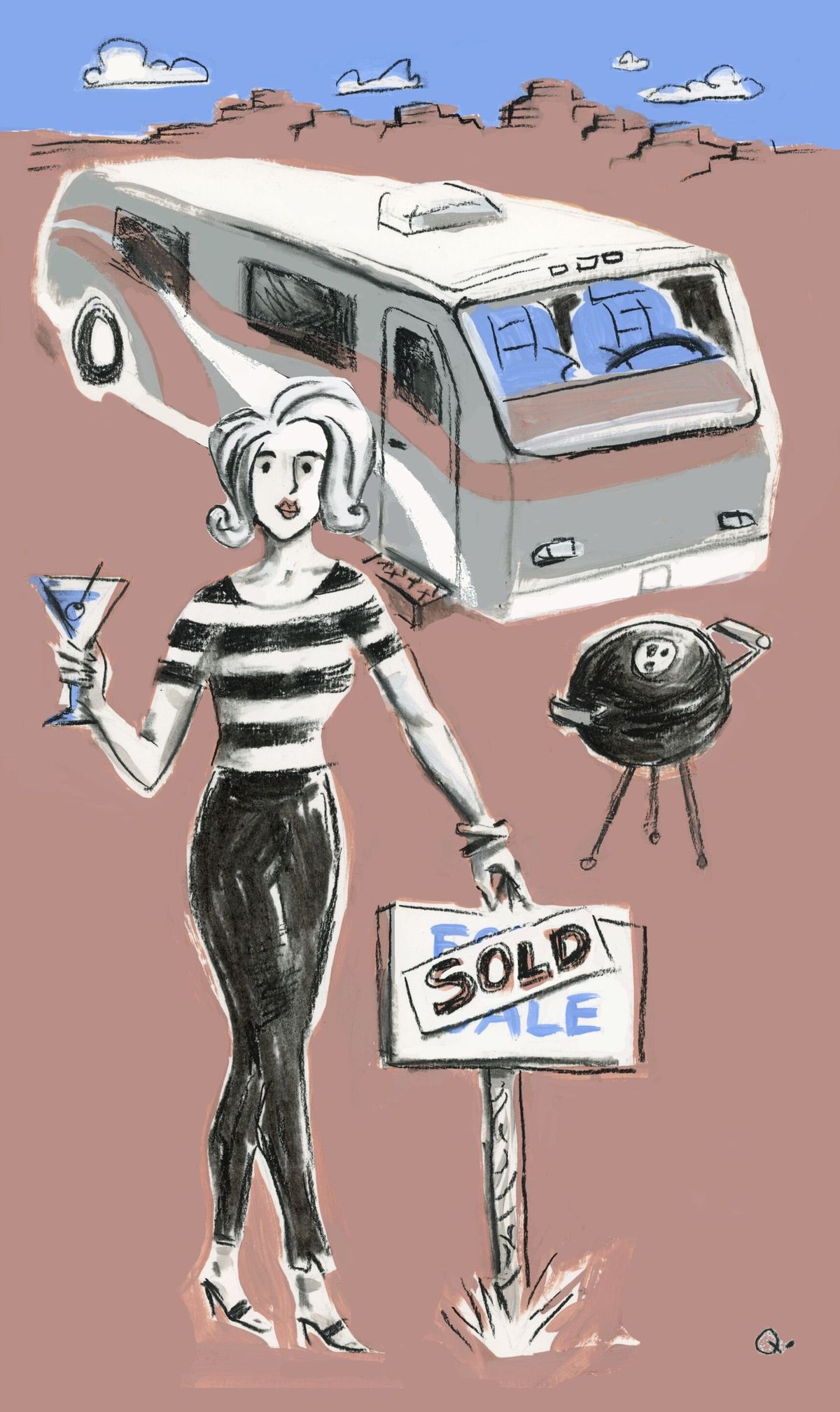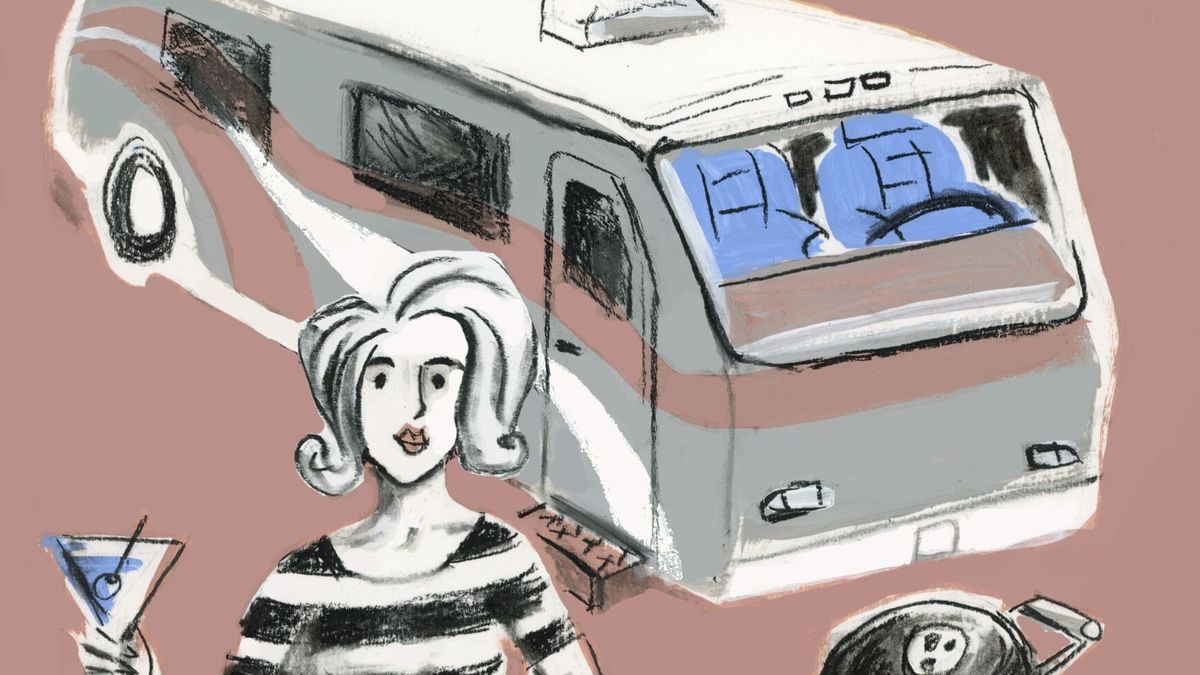Draw of the outdoors: More RVs built in boom help restock dealers and consumer shows, and buyers are trending younger
(Molly Quinn/The Spokesman-Review)Buy a print of this photo
As far as supply and demand goes, recreational vehicles went on a wild ride in the past two years.
RV sales boomed during the pandemic, clearing out some dealers’ lots in Spokane and nationwide. However, industry leaders say both a push to manufacture more units and winter’s slowdown equate to some improved inventory now despite backlogged orders.
It also means more units to display at scheduled local RV shows this month. Several regional dealers plan to bring inventory to the Jan. 20-23 Inland Northwest RV Show & Sale at the Spokane County Fair and Expo Center.
A week prior, the National RV Show is scheduled Thursday through Jan. 17 at the Spokane Convention Center. Nationwide, big shows are planned in Texas and Florida.
“A lot of shows were canceled last year, but consumers can expect to see RVs at their local consumer shows, maybe not as many as there were in years past, but there will be RVs at shows,” said Monika Geraci, a RV Industry Association spokeswoman.
“The manufacturers are continuing to build these record numbers of RVs, so you should see inventory at local dealerships start to build back up, as well.”
That’s also true for shows because manufacturers have sent popular, new-build models for people to see at those venues, although customers likely will have to place orders, said Dorthy Foster, RnR RV sales manager for its north Spokane location. RnR plans to be at the fair center.
“We’re not lacking inventory for the show; we’ll have plenty for everybody,” Foster said. “A lot of the inventory that people want are sold before they get here (dealership), so people don’t get to touch and feel them. We’ve set aside units specifically for people to be able to actually view them so they can place their orders off of them.”
Those RVs at the show can be sold, first-come, first served, but would remain on display until the event ends.
Foster said that although lower inventory persisted this past year, RnR worked with manufacturers to keep its supply up “as much as possible.”
“Obviously, there were certain models we couldn’t get; Class A’s (motor homes) and Class C’s (truck or van chassis), there’s a shortage on those due to the Ford chips just like they’re having with the vehicles, so that’s probably going to be the biggest shortage in regard to the RV industry.”
The global semiconductor chip shortage disrupted the vehicle industry throughout 2021, halting production, reducing inventory and raising prices.
Foster said RV manufacturers have had other issues on occasion in getting certain supplies such as heaters or glue. However, she’s heard many people say they’re willing to wait on an RV for six to eight months because they describe wanting the freedom to go places.
“It’s important that people feel comfortable and are able to travel with their family and their pets,” she said. “People like to travel, and they don’t want to give it up.”
The RV Industry Association represents the manufacturers and suppliers who build homes on wheels, or Geraci said, 98% of RVs built in the U.S. are manufactured by its members. The group has more than 40 years’ worth of data that has tracked the industry.
All categories of outdoor industries boomed during the pandemic, from boats and all-terrain vehicles to bicycles. But RV builders, as with other industries, also had labor and supply-chain issues.
Despite that, U.S. wholesale shipments of RVs were projected to hit a record 602,200 units in 2021, which would be a 40% increase over 2020 and 19% higher than the past record high set in 2017, based on an analysis prepared for the association. This year, a smaller hike of 2% is expected but still set to build nearly 614,000 units.
Backlogs for RV orders remain part of the equation. In a recent earnings report, RV maker Thor Industries announced an $18 billion order backlog as of Oct. 31. The company owns brands such as Jayco and Airstream.
Existing RV owners seeking parts often wait, as well, said Bruno Peneluppi, owner of Liberty RV Roofing and Center, which does specialized RV roof work and RV sales.
“It takes six to eight months to order a special-order awning,” Peneluppi said.
Although the industry and local dealers have ridden a long surge, the RV demand remains strong and also has reached younger owners, he said.
“People were saying we’re not going to be among tight quarters with everybody traveling,” Peneluppi said. “They want to be in their own space, in their own form of transportation.
“There are many first-time owners, and the age group went down even to those in their 20s and 30s. We had a few before, but there weren’t as many. It’s opened up the industry to a wide range of age groups who are RV owners just since the pandemic.”
Now, RV dealers during recent cooler months have stocked up enough inventory for shows to likely carry through to the spring, he said. “We do have inventory right now, and just by knowing the dealers around me, I can see on their lots that they have inventory on the ground right now.”
After initial pandemic lockdowns, people seemed to rush to dealerships to purchase RVs, Geraci said. “We thought initially, this was that pent-up demand. April and May are generally good months for RV sales as people are looking toward the summer camping season.
“It soon became clear this wasn’t just pent-up demand. This was people looking to experience the freedom and control to go where you want to go when you want – still being able to travel but also control your environment, bring your own bathroom, bedroom, food.”
While the pandemic helped fuel RV popularity to travel away from risks in public spaces, Geraci said newer consumers in surveys cited a different attraction. COVID-19 concerns ranked low. Instead, it’s the draw of the outdoors.
“They’re wanting to explore the outdoors and choosing an RV as a base camp,” Geraci said.
“There’s a more abstract idea of people rediscovering the great outdoors over the past two years, which sounds corny, but if you look at other outdoor segments such as sales of bikes and people going to local parks, it’s said to be safer and gets you out of your house.
“Getting outdoors has been a shift in people’s mindset and priorities the past couple of years, and there’s also research that if you get two hours outdoors, that is the new 10,000 steps. There are real tangible health benefits.”
For people who can’t get an RV now, rental options have grown, she added. Many dealers offer rentals, as do companies such as Cruise America and El Monte RV. Outdoorsy or RV Share offer peer-to-peer rentals.
“Renting gives you an option to try out what’s out there and find out what you like or just to get out and RV while you’re waiting for the RV you’ve selected to be built.”

